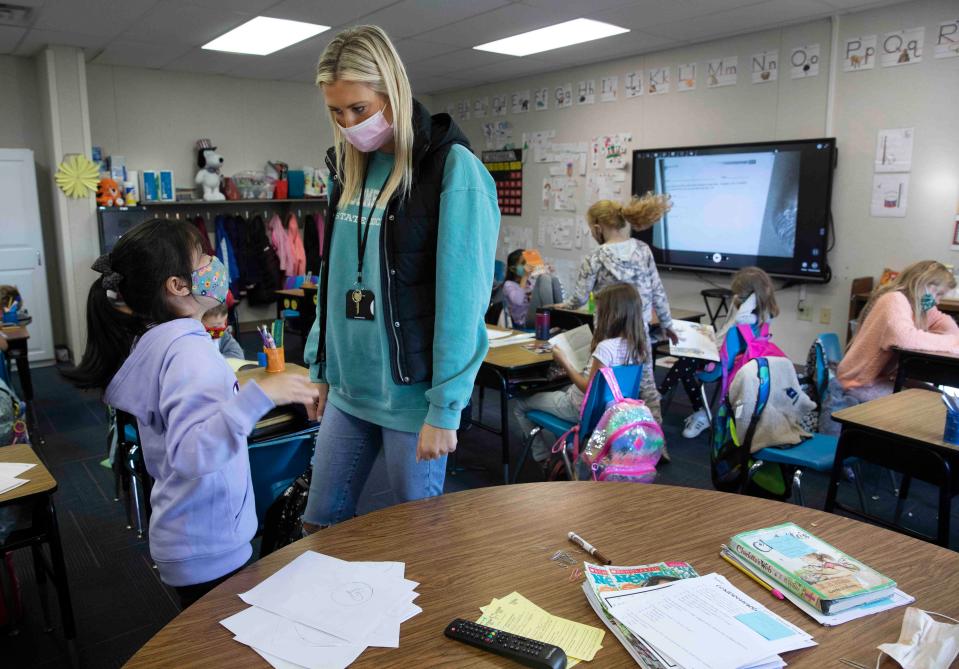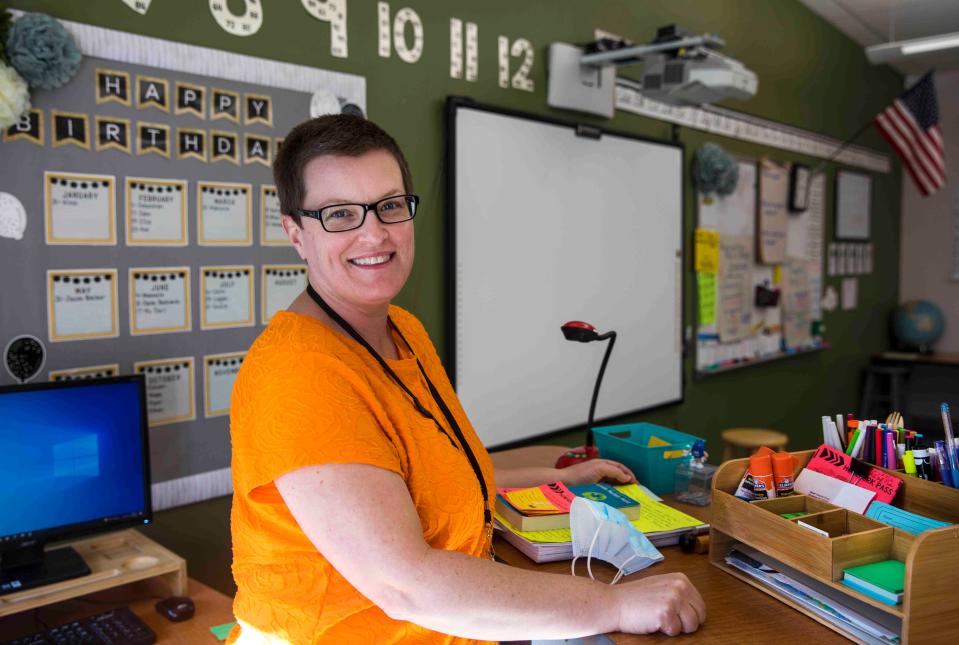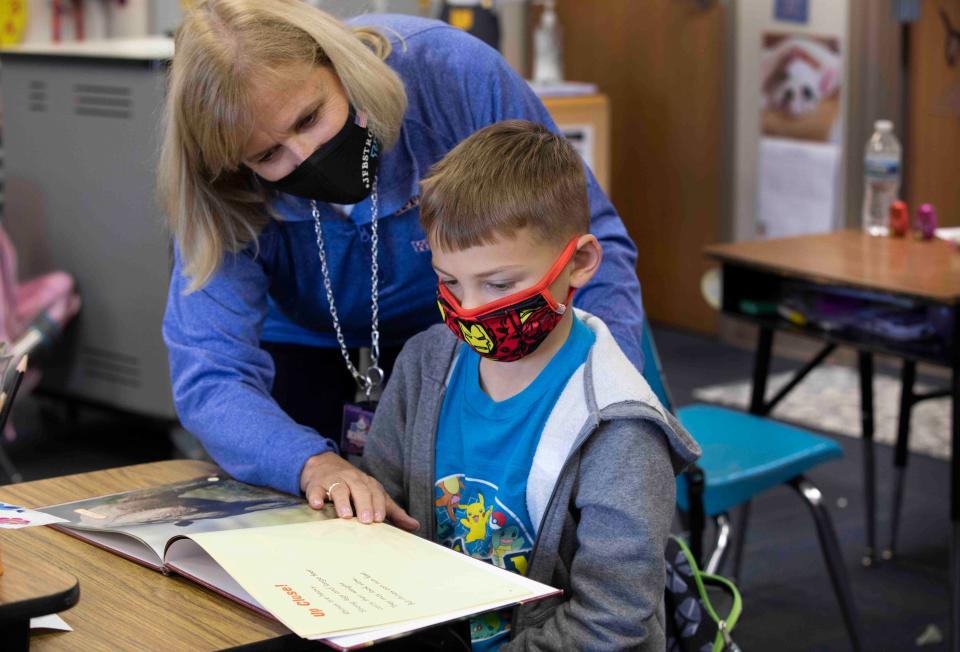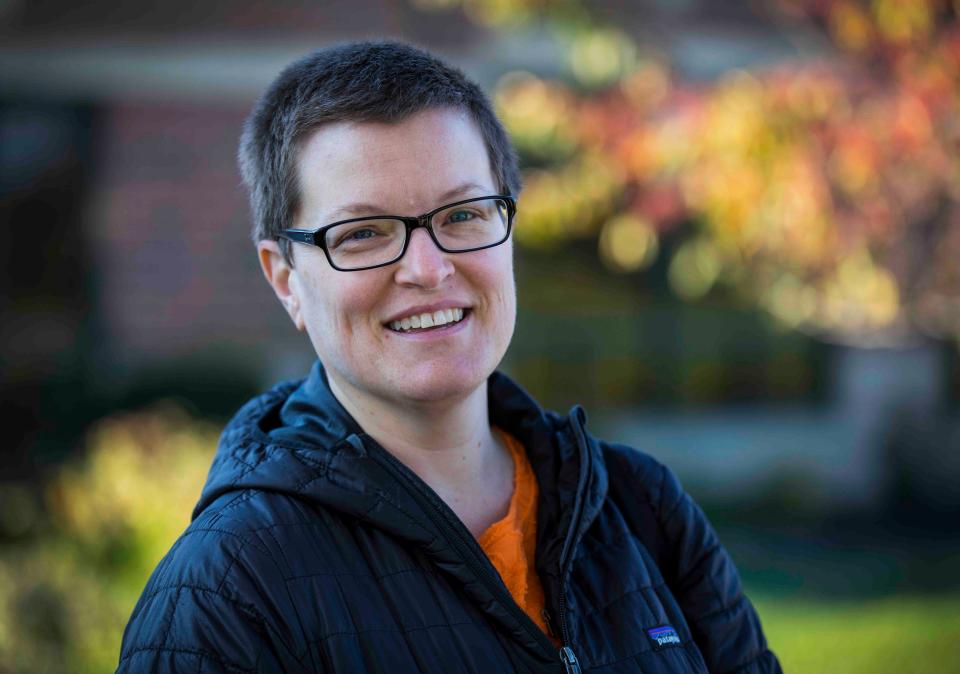Urgent need for substitute teachers in Southwest Ohio, Northern Kentucky: Enquirer survey
Peggy Sobczak has subbed in Sycamore Schools classrooms with preschoolers through high school students this school year, but her favorite assignments are with elementary kids. She said she's comfortable in that environment since she used to be an elementary school teacher before she had children of her own.
'Hurting a lot of districts right now': Shortages of substitute teachers, bus drivers
It's fun to sub in her own community, Sobczak said. She likes being able to text her friends and say she had their children in class for a day. And there's always an assignment available, she said. They pop up each morning through an app on her phone.
“One Friday I wasn’t feeling well and there were, like, eight open sub assignments that came through the app,” Sobczak said. “That’s hard to see(…) because I’ve been a teacher. I know what it’s like. You need to be able to take off when you’re sick or when you have an emergency or whatever. So I think subs are just super vital to the whole system.”

But for the last several years, there have been increasingly fewer substitute teachers available to take those daily assignments.
The Hamilton County Educational Service Center provides subs to 30 districts in Hamilton and Clermont counties through its partnership with Comprehensive Substitute Solutions. The number of subs in the program went from 1,506 in the 2019-2020 school year to 1,294 subs last school year. This year, there are 864 subs in the system – down 42.6% from two years ago.
"We hire all year long, so this year’s number of subs will increase. It needs to," program manager Matt Wendeln said.
The Enquirer surveyed all public K-12 school systems in Southwest Ohio and Northern Kentucky regions about their substitute teachers and received responses from 38 districts. Almost every one of them said they are struggling with the sub shortage, which the majority agree was an issue prior to the pandemic.
The average fill rate for the month of September from districts that responded to The Enquirer was 64%. Newport Independent Schools had the lowest average September fill rate with 3%, while Ludlow Independent Schools had the highest with a 98% average fill rate that month.
The problem isn't necessarily that more teachers are absent, most districts responding to the survey concluded. It's that fewer people are willing to sub.
David Fultz, assistant superintendent at West Clermont Local Schools, said the district was finding it difficult to fill 100% of its teacher absences prior to the pandemic, but that COVID-19 "has exacerbated the issue."
"Although some of this may be due to staff affected by illness or quarantine, the larger reason for this shortage for us is the decreased number of individuals wanting to be subs," Fultz said. "Typically, we have attracted retired teachers and other retired individuals into these positions who, when the pandemic hit, no longer wanted to put themselves back into multiple schools."
Few districts responded to the survey saying they had no issues at all with finding enough subs. And some of those who wouldn't define their situation as a "shortage" were still having problems.

"Not a shortage, but the pandemic has caused some of our veteran subs (who may be a little older) to stay away from subbing temporarily," Ludlow Independent Schools Director of Student Services Jennifer McMillen said. "The majority of our subs are retired teachers or community members."
Sobczak said she only started subbing a couple of weeks before COVID-19 hit, and then started up again after she received the vaccine last spring.
On the days she is a sub, her report time is typically about 40 minutes before students arrive. She uses that time to wrap her head around the teacher's lesson plans which, she said, if she's lucky, will be about five pages long. The more detailed, the better.
As students enter the classroom, Sobczak said she tries to make herself relatable. She'll show the class a picture of her cat, maybe.
Once everyone settles in, she tells them: “I know it is so hard to have a sub. It’s hard because the sub always does weird things that your normal teacher doesn’t do and that can feel kind of upsetting. And then it can also be hard because some(…) of the students will act differently.”
When she does this, Sobczak said she can visibly see some students start to relax. She tries to address them by name and strives for at least one compliment or other positive interaction with each kid.
“It just dawns on me that as a substitute teacher, like, what I’m teaching them is not the most important thing. The most important thing is how I’m treating the kids," she said.
Increasing pay to lure applicants
Wendeln said the sub shortage first became a large issue nearly a decade ago, when the state of Ohio changed retirement benefits that used to allow teachers to comfortably retire at age 52, up to at least 60 years old. Retirees make up a large portion of sub pools.
The other largest demographic of substitute teachers, Wendeln said, is recent college grads with teaching degrees hoping to build connections and score a full-time teaching position. But fewer and fewer people are going into education, especially fewer students of color, The Enquirer and the Canton Repository found in an investigation earlier this year.
When schools can't find subs, it causes other problems. It means administrators, school counselors and other staff need to step away from their own tasks to fill in for absent teachers. In some emergency situations, schools will combine classes if they can't find a sub. None of these options are ideal for schools or for kids, who rely on routines to keep balance and structure in their academics.
But employees need consistency, too. And during the COVID-19 pandemic, many subs were out of a job.
"We have lost several good subs due to the pandemic, the stresses of how school environment is due to lack of structure for previous year during virtual school, and the need for income during the past year so finding other jobs," said Glenda Smith, district attendance and payroll coordinator at Dayton Independent Schools in Campbell County.

And now Dayton officials said they are losing even more subs to neighboring districts that have greatly increased their daily pay rates.
To attract more employees, many area school systems are raising sub wages. This includes both building subs who report to the same school each day to fill absences and daily subs who, like Sobczak, are often hired through a contractor and can decide each morning if and where they'd like to take assignments.
Daily subs can narrow their preference by location, district or even a specific building. Wendeln said building subs became more popular during the pandemic: only 3-4 of the 30 school districts he serves had hired building subs before COVID-19, but now more than 16 districts have hired in-house subs. Of the 38 districts that responded to The Enquirer's survey, 25 said they have hired at least one full-time daily sub.
Tracey Carson, public information officer for Mason City Schools, said the school board approved raising the daily rate for subs from $85 to $100 a day. Covington Independent Public Schools upped their daily sub rates from $135 to $200.
During the pandemic, Wendeln said the highest maximum daily rate for in-house subs rose to $240 in the 2020-2021 school year, compared to $150 and $175 daily maximums in years prior. Daily subs' maximum rates have capped at $120 over the last two school years for districts contracting with Substitute Solutions.
Another solution, Wendeln said, is removing barriers for sub applicants.
“Of course pay rate matters, a bit. As people who are going to do this work and do it often will sometimes go a community or two over for a higher pay rate, but they’re not going to drive all the way across town," Wendeln said. "And so school districts that have communities with more bachelor’s degrees in them are going to have more substitutes because traditionally that’s been a requirement to have a bachelor’s degree.”
Removing barriers for applicants
Last year, Ohio Gov. Mike DeWine signed a bill that allowed school districts to, voluntarily, hire subs without bachelor's degrees. Those subs were given temporary substitute teaching licenses valid for one year.
Wendeln said 5 to 6% of Substitute Solutions' employees were hired last year without having a bachelor's degree.
“We’ve got preschool teachers, coaches, Sunday school teachers. Folks that have some experience working with kids but didn’t have a bachelor’s degree. But they can manage a classroom, get them to specials on time. And that worked out really nicely," Wendeln said.
DeWine extended the bill last month to be applied for this school year, which administrators hope will help attract more applicants.

Sobczak said the job is challenging and different from one day to the next. You have to be flexible, she said. Sometimes the assignment she takes for the day changes by the time she gets to the school.
But one thing is for sure: the need for subs is present. And Sycamore faculty and staff, especially secretaries tasked with filling absences each day, are sure to show Sobczak their appreciation.
“And that’s satisfying, to feel like I’m saving the day because they’re always so grateful to have you there and always so grateful that you’re not giving them a hard time about changing your assignment or whatever," Sobczak said.
And on really good days, Sobczak said the kids show her their appreciation, too.
Before she left a second-grade classroom last week, one student dropped her a slip of paper inscribed with pink crayon: "You're the best sub yet!"
"That made me feel good," Sobczak said, holding the note up proudly and smiling.
This article originally appeared on Cincinnati Enquirer: Urgent need for substitute teachers in Cincinnati area, survey shows

